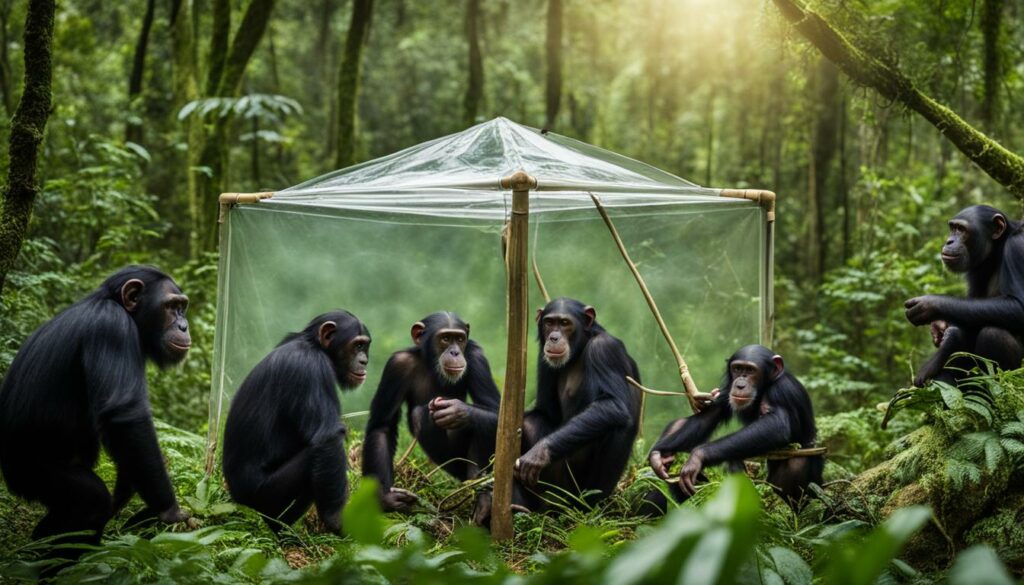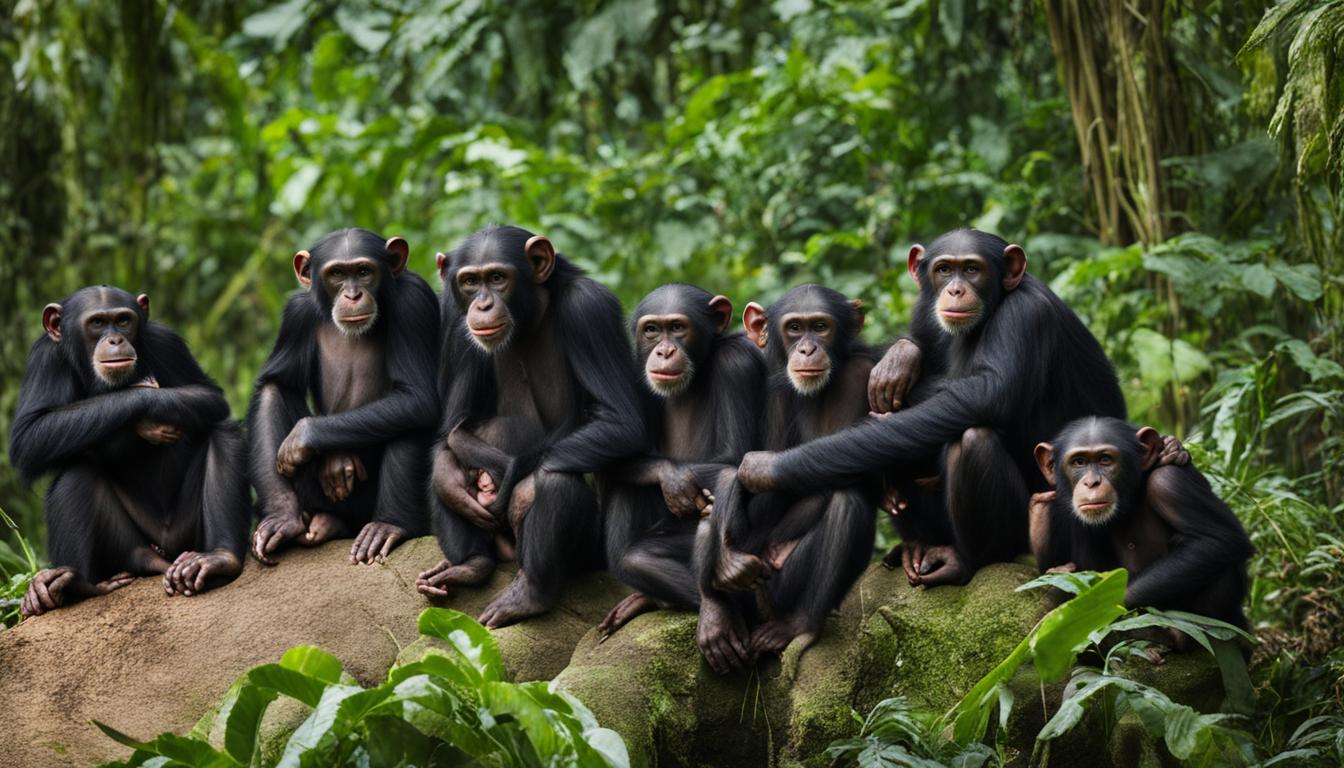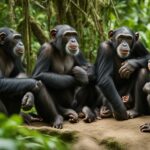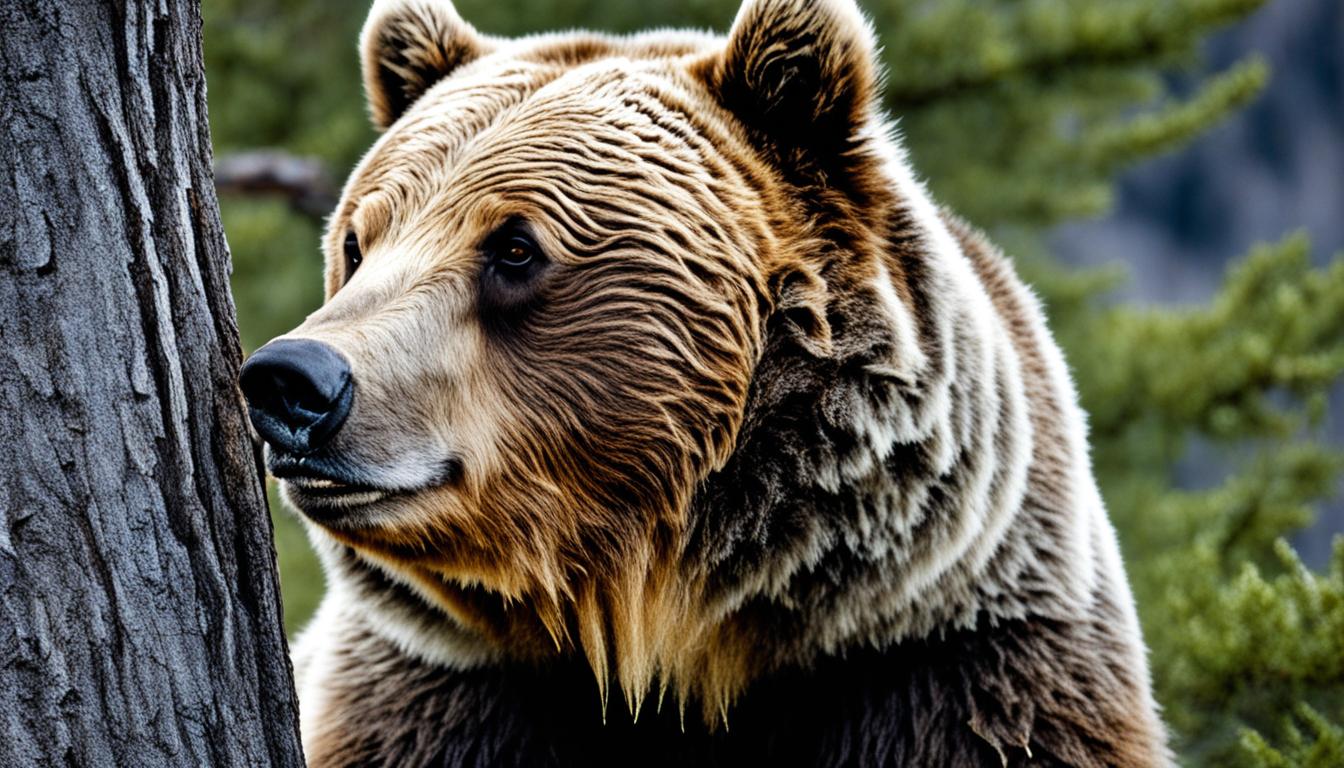Chimpanzees, our closest genetic relatives, are facing significant challenges that jeopardize their existence in the wild. Alongside habitat loss and poaching, infectious diseases pose a grave threat to their survival. These diseases, known as zoonotic diseases, can be transmitted from humans or domesticated animals to chimpanzees. Outbreaks of emerging infectious diseases in primates, like Ebola, have resulted in devastating mortality rates among wild chimpanzees. Understanding and addressing these disease threats is vital to safeguarding the future of these incredible creatures.
The impact of disease on chimpanzee conservation
The health of chimpanzees is a critical concern for conservation efforts. As wildlife populations already face threats from poaching and habitat loss, they are more vulnerable to being devastated by diseases. The emergence of new pathogens, whether from humans or other animals, further increases the risk to primates like chimpanzees. In particular, infectious diseases have had a significant impact on both wild chimpanzees and other ape populations.
One notable example is the Ebola virus, which has caused substantial mortality in chimpanzee populations. A study conducted in Taï National Park, Ivory Coast, found that Ebola was responsible for the death of about 50% of the park’s chimpanzees between 1999 and 2000. This emphasizes the urgent need for strategies and interventions to protect chimpanzees from infectious diseases.
“Diseases have the potential to cause long-term population declines and even local extinctions of chimpanzees,” said Dr. Jane Goodall, renowned primatologist and conservationist. “We must prioritize the health of chimpanzee populations to ensure their survival and the preservation of our closest genetic relatives in the wild.”
The scale of infectious diseases impacting chimpanzee populations
The impact of infectious diseases on chimpanzee populations extends beyond Ebola. Respiratory infections, such as the common cold, have also been a cause for concern. Chimpanzees are susceptible to these infections as they can be transmitted through respiratory droplets expelled when coughing or sneezing. Studies have shown that human respiratory viruses, like rhinoviruses, can infect chimpanzees, creating the potential for widespread outbreaks.
In addition to the direct impact of infectious diseases, there is also the risk of disease transmission from humans to chimpanzees. Activities such as ecotourism and research, while important for conservation efforts, can inadvertently expose chimpanzees to human-borne pathogens. Therefore, it is crucial to establish and enforce strict guidelines to minimize the risk of disease transmission and protect chimpanzee populations.
| Disease | Impact on Chimpanzee Populations |
|---|---|
| Ebola | Caused significant mortality in wild chimpanzees and other ape populations |
| Respiratory infections | Can be transmitted from humans to chimpanzees, posing a risk for outbreaks |
| Zoonotic diseases | Pose a threat to chimpanzees through human-borne pathogens |
Understanding the transmission of diseases to chimpanzees
Research has shown that chimpanzees can be susceptible to human infectious diseases due to their close evolutionary relationship and similar immunological features. This makes them vulnerable to zoonotic pathogens, which are diseases that can be transmitted between humans and animals. Activities like poaching and habitat destruction, as well as ecotourism, increase the risk of disease transmission between humans and chimpanzees. It’s important to note that infectious diseases can be transmitted to chimpanzees without close physical contact, through methods like sneezing and coughing.
According to a study published in the Journal of Wildlife Diseases, diseases such as respiratory infections, measles, and tuberculosis can be transmitted from humans to chimpanzees. The study found that chimpanzees living near human settlements were more likely to contract these diseases. Additionally, another study conducted in the Taï National Park in Côte d’Ivoire found evidence of influenza A virus transmission from humans to wild chimpanzees through respiratory droplets. These findings highlight the need for continuous monitoring and investigation of human-borne infectious diseases in order to effectively manage the health of chimpanzee populations.
“Our research emphasizes the importance of minimizing human-chimpanzee contact to reduce the risk of disease transmission. This includes implementing measures such as strict regulations for ecotourism and promoting awareness among local communities about the potential impacts of their actions on chimpanzee health.”
Efforts to protect chimpanzees from disease transmission also involve the implementation of biosecurity measures in research facilities and rehabilitation centers. These measures aim to prevent the introduction and spread of infectious diseases among captive chimpanzees, which can then be transmitted to wild populations if released into their natural habitats. It is essential to prioritize the health of chimpanzees and invest in research, surveillance, and prevention strategies to ensure the long-term conservation of this endangered species.
Table: Risk Factors for Disease Transmission to Chimpanzees
| Risk Factor | Description |
|---|---|
| Poaching | Direct contact with poachers can expose chimpanzees to infectious diseases carried by humans. |
| Habitat Destruction | Loss of natural habitat increases proximity between humans and chimpanzees, increasing the risk of disease transmission. |
| Ecotourism | Visitation by tourists can introduce pathogens to chimpanzees and disrupt their natural behaviors. |
| Respiratory Droplets | Infections like influenza can be transmitted through respiratory droplets, putting chimpanzees at risk. |
| Direct Contact | Close physical contact with humans or objects contaminated with pathogens can lead to disease transmission. |
Research on Chimpanzee Health and Disease
A special edition of the American Journal of Primatology features groundbreaking research on chimpanzee health, with a particular focus on Gombe National Park in Tanzania. This national park holds great significance in the field of primatology as it is where Jane Goodall conducted her pioneering research on chimpanzee behavior, resulting in the longest continuous field study of any animal species.
Contributions from renowned experts provide valuable insights into the health and disease dynamics of chimpanzees, shedding light on the challenges they face in their natural habitat. The research conducted in Gombe National Park serves as a critical baseline for understanding the impact of infectious diseases on primate populations and helps guide conservation efforts.
Chimpanzee health monitoring plays a vital role in identifying and mitigating disease threats. Ongoing research efforts in Gombe National Park and other chimpanzee habitats encompass a wide range of studies, including disease surveillance, genetic analysis, and behavioral observations. By closely monitoring the health and well-being of chimpanzees, researchers can detect early signs of outbreaks and develop targeted interventions to protect these endangered primates.
| Research Area | Key Findings |
|---|---|
| Zoonotic Pathogens | Identification of zoonotic pathogens in chimpanzees, providing insight into potential spillover from humans and other animals. |
| Disease Transmission | Investigation into the modes of disease transmission between humans and chimpanzees, including the role of ecotourism activities. |
| Immunogenetics | Genetic research on chimpanzee immune systems to better understand their susceptibility to specific diseases and inform vaccination strategies. |
“The research conducted in Gombe National Park and other chimpanzee habitats is crucial for our understanding of chimpanzee health and disease dynamics. By studying their genetics, behavior, and interactions with humans, we can develop effective strategies to protect these remarkable creatures,” said Dr. Jane Goodall, world-renowned primatologist and conservationist.
The ongoing dedication to chimpanzee health research in Gombe National Park exemplifies the urgent need to prioritize primate conservation. Through collaborative efforts among researchers, conservation organizations, and local communities, we can work towards safeguarding the health of chimpanzee populations and ensuring their long-term survival.
The need for wildlife management strategies for disease prevention
Protecting the chimpanzee population from infectious diseases is of utmost importance to ensure their long-term survival. To effectively combat disease threats, the implementation of wildlife management strategies is crucial. By taking proactive measures, we can reduce the risks of disease transmission and protect these incredible creatures.
One key aspect of wildlife management is minimizing contact between humans and chimpanzees. This can be achieved by reducing human intrusion into their habitats. By establishing protected areas and enforcing strict regulations, we can create safe spaces for chimpanzees to thrive without the risk of exposure to human-borne diseases. Additionally, it is essential to regulate activities like ecotourism, as they can increase the chances of disease transmission.
An integral part of disease prevention is conducting regular disease surveillance and monitoring programs. Early detection of outbreaks is crucial for prompt intervention and mitigation. By closely monitoring the health of chimpanzee populations, we can identify potential disease threats and take immediate action to prevent further spread. Collaborative efforts between research institutions, conservation organizations, and local communities are essential to effectively manage and mitigate these disease risks.
Strategies for disease prevention and control in chimpanzees:
- Reducing human intrusion into chimpanzee habitats
- Implementing strict regulations for activities like ecotourism
- Conducting regular disease surveillance and monitoring programs
- Collaborating with research institutions, conservation organizations, and local communities
By prioritizing the health of chimpanzees and implementing these wildlife management strategies, we can protect their population from the devastating impacts of infectious diseases. Together, we can contribute to the conservation and preservation of these incredible animals and ensure a sustainable future for both chimpanzees and their habitats.

| Strategies for Disease Prevention and Control | Description |
|---|---|
| Reducing human intrusion into chimpanzee habitats | Establishing protected areas and enforcing regulations to minimize contact between humans and chimpanzees. |
| Implementing strict regulations for activities like ecotourism | Regulating visitor activities to prevent disease transmission between humans and chimpanzees. |
| Conducting regular disease surveillance and monitoring programs | Monitoring the health of chimpanzee populations to detect and respond to disease outbreaks in a timely manner. |
| Collaborating with research institutions, conservation organizations, and local communities | Working together to share knowledge, resources, and expertise in managing and mitigating disease risks. |
Conclusion
In conclusion, the threats posed by diseases to wild chimpanzee populations are significant and require urgent attention. The decline in chimpanzee populations due to habitat loss and poaching is compounded by the risk of infectious diseases, including zoonotic pathogens. To protect chimpanzees and ensure their long-term survival, it is crucial to prioritize their health and implement effective wildlife management strategies.
Ongoing research and collaboration are essential for understanding disease dynamics and developing strategies for disease prevention and control. By addressing chimpanzee disease threats, we can contribute to the conservation and preservation of our closest genetic relatives in the wild.
To achieve this, proactive measures need to be taken to prevent contact between humans and chimpanzees. This includes reducing human intrusion into chimpanzee habitats and implementing strict regulations for activities like ecotourism. Additionally, continuous disease surveillance and monitoring programs are vital for early detection and response to disease outbreaks. Collaborative efforts between research institutions, conservation organizations, and local communities are key to successfully managing and mitigating disease threats to chimpanzees.
In summary, safeguarding chimpanzee populations from infectious diseases requires a comprehensive approach that involves understanding disease transmission dynamics, implementing wildlife management strategies, and promoting collaborative efforts. By prioritizing primate conservation and embracing effective disease prevention measures, we can help protect the future of chimpanzees and contribute to the overall biodiversity and ecological balance of our planet.
Can Humans Transmit Diseases to Wild Chimpanzee Populations?
Yes, humans can transmit diseases threatening wild chimpanzees through various means such as ecotourism, research, and habitat destruction. Diseases like Ebola, respiratory infections, and gastrointestinal illnesses can have a devastating impact on wild chimpanzee populations, making it crucial for humans to take preventive measures when interacting with these endangered animals.
FAQ
What diseases pose a threat to wild chimpanzee populations?
Wild chimpanzee populations are threatened by various diseases, including zoonotic diseases such as Ebola that can be transmitted from humans or domesticated animals.
How do diseases impact chimpanzee conservation?
Diseases have a significant impact on chimpanzee conservation efforts, as they can devastate populations that are already vulnerable due to poaching and habitat loss.
How are diseases transmitted to chimpanzees?
Diseases can be transmitted to chimpanzees through various methods, including close physical contact, but also through sneezing and coughing.
What research has been done on chimpanzee health and disease?
Extensive research has been conducted on chimpanzee health, including studies conducted in Gombe National Park in Tanzania, where Jane Goodall conducted her groundbreaking research on chimpanzee behavior.
Why is wildlife management important for disease prevention?
Wildlife management strategies that aim to prevent contact between humans and chimpanzees, such as reducing human intrusion into their habitats and implementing regulations for activities like ecotourism, are crucial for disease prevention.
What is the conclusion regarding chimpanzee disease threats?
The threats posed by diseases to wild chimpanzee populations are significant and require urgent attention. Prioritizing chimpanzee health and implementing effective wildlife management strategies are crucial for their long-term survival.











